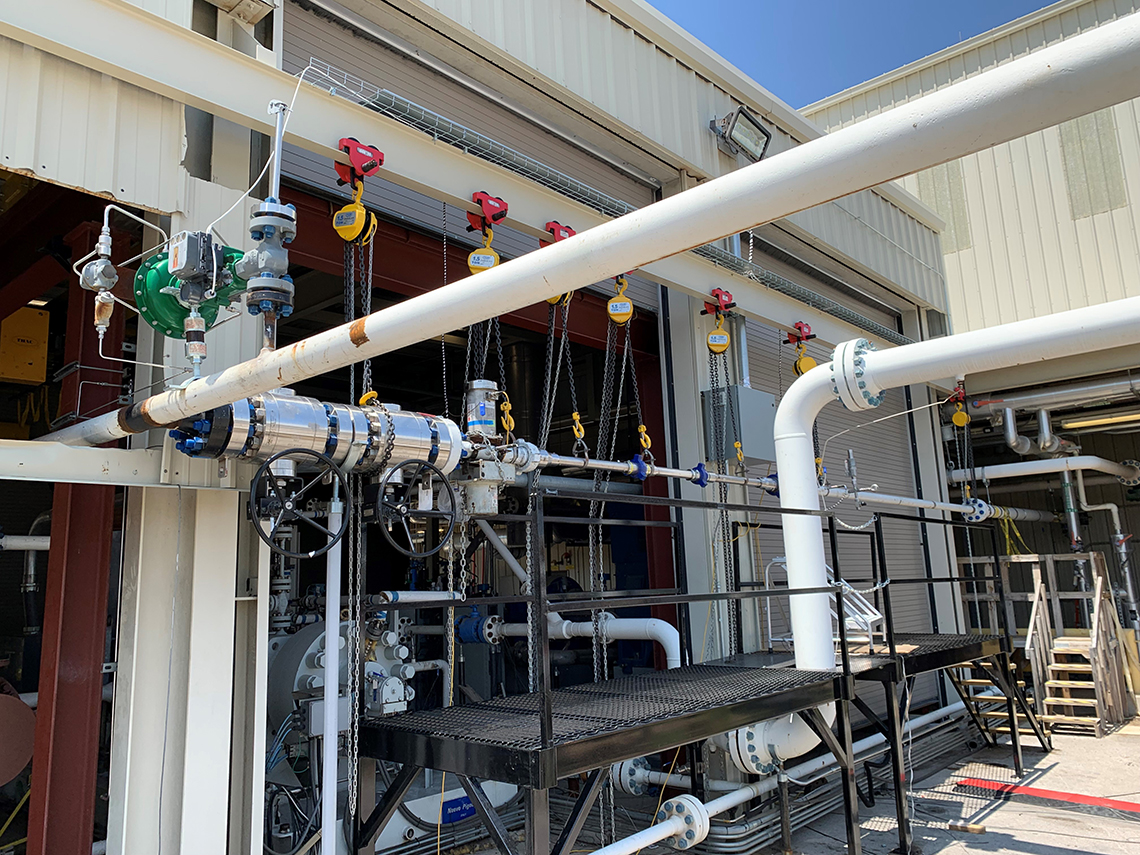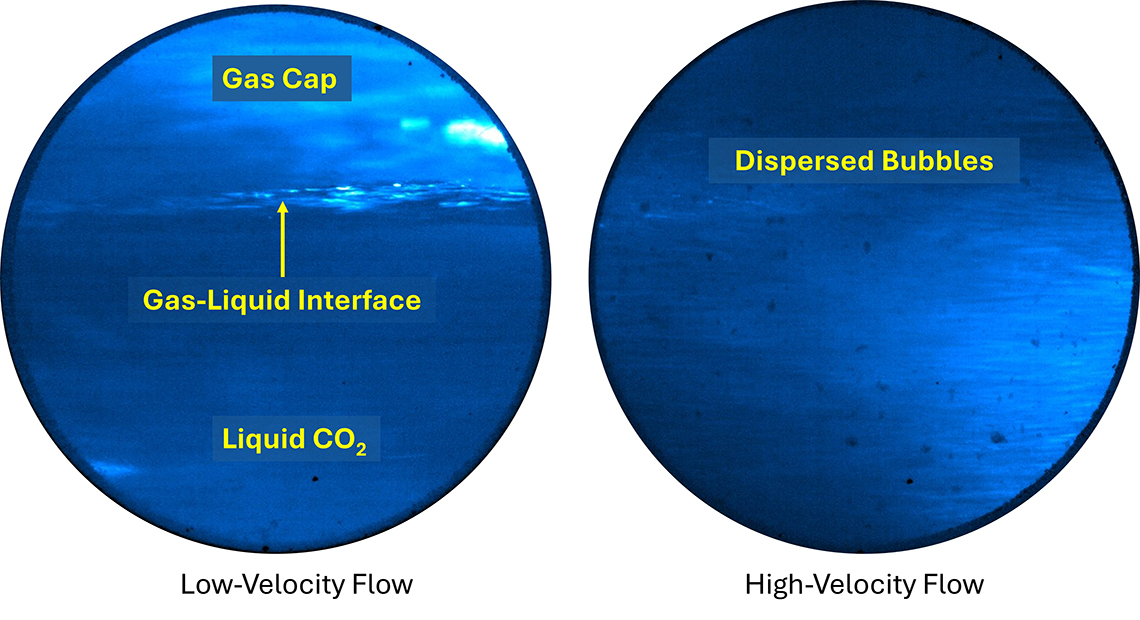Background
Carbon capture utilization and storage (CCUS) technology holds tremendous potential for reducing the net emission of CO2 to the atmosphere. For CCUS to economically attain its full scale, the large quantity of captured CO2 must cost-effectively be transported from capture sites to storage/utilization sites by pipeline networks. Current research and practices related to CO2 pipeline transportation are primarily limited to onshore transportation of high-purity CO2 from natural geological sources. Yet the CO2 gas mixtures generated from CO2 capture sites (anthropogenic CO2) in CCUS inevitably contain various types of impurities that, even in small quantities, can significantly alter the thermophysical properties of CO2 mixtures and their transport behaviors such as pressure drop, liquid accumulation, and flow patterns.
To address these gaps and facilitate the design and operation of large-scale CCUS transportation systems, the University of Texas Austin’s Petroleum Geosystems Engineering Department (UT-PGE) and SwRI initiated this research project to systematically investigate the flow behaviors of anthropogenic CO2 under pipeline transportation conditions. The models, experimental results, and lessons learned from this project can be used by the government and industry to improve the design and operation of pipelines transporting CO2.
Approach
UT-PGE developed a one-dimensional mechanistic flow and fluid property model to predict the behaviors of single-phase and vapor-liquid multiphase CO2 flow in pipelines. SwRI utilized a large-scale CO2 flow loop (shown in Figure 1) to observe gas and liquid distribution and pressure drop in a three-inch diameter pipe in horizontal and slightly inclined geometries. The experimental data were used to validate the model developed by UT-PGE.
Accomplishments
A wide range of pipeline conditions were achieved in the flow loop test that simulated anthropogenic CO2 transport. The explored variables included velocity, pressure, temperature, and gas fraction and the gathered data included pressure drop, phase distribution, and liquid holdup. The observed flow patterns (shown in Figure 2) differed from the predicted flow patterns due to the difference in fluid properties of CO2 when compared to traditional pipeline fluids. However, the pressure drop predictions from UT-PGE’s model were in close agreement with the pressure drop data. The observations and lessons learned from the test program were used to execute a conceptual design study to adapt an existing multiphase flow test facility at SwRI to multiphase CO2 service for future test programs.

Figure 1: Photograph of the two-phase CO2 flow loop. An existing CO2 pump at SwRI will provide the flow conditions required for this project. The flow loop is capable of pressures up to 250 bar.

Figure 2: Two-phase CO2 flow patterns. Low-velocity conditions resulted in stratified flow. Dispersed flow was observed at high-velocity conditions.

